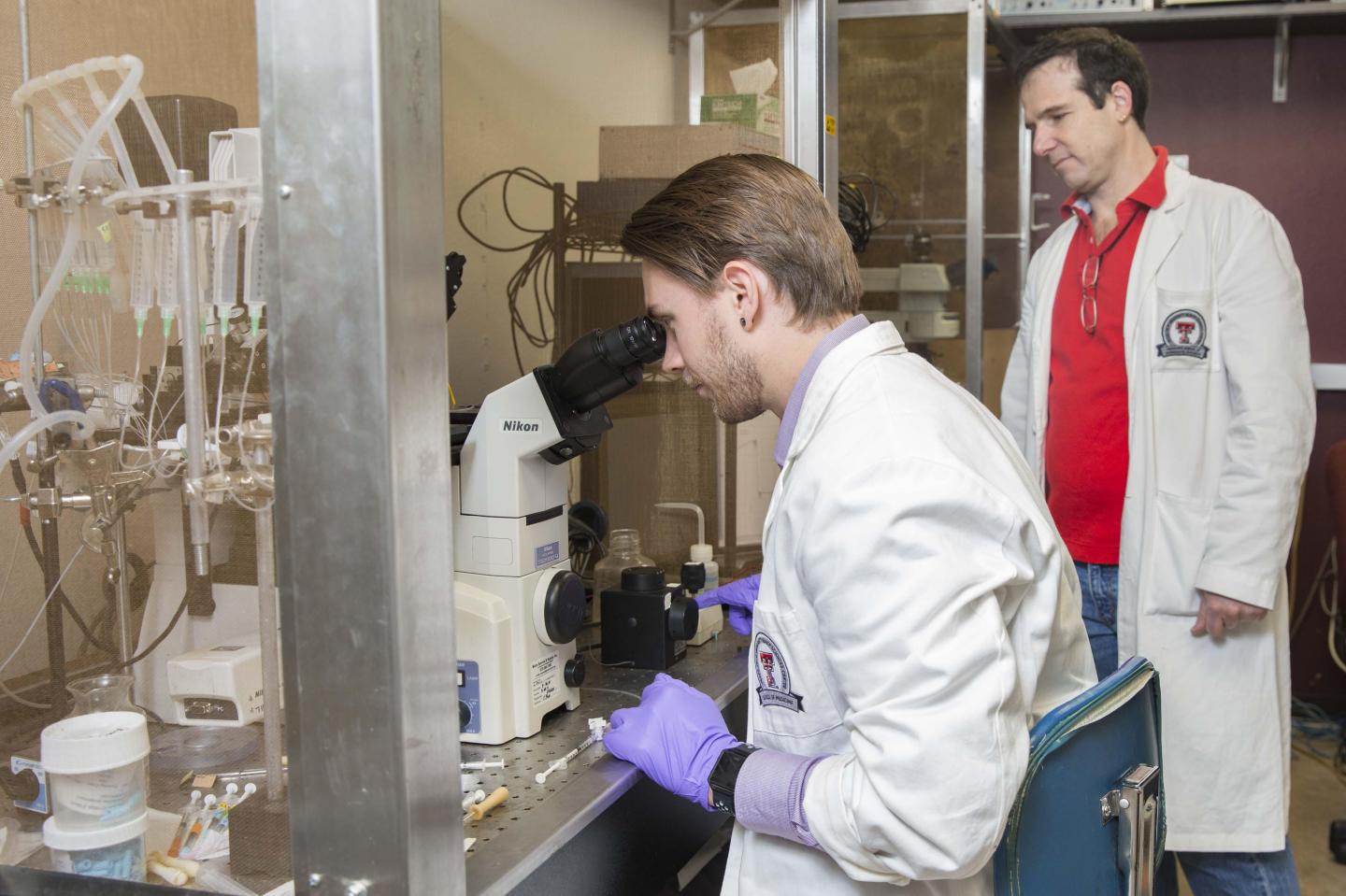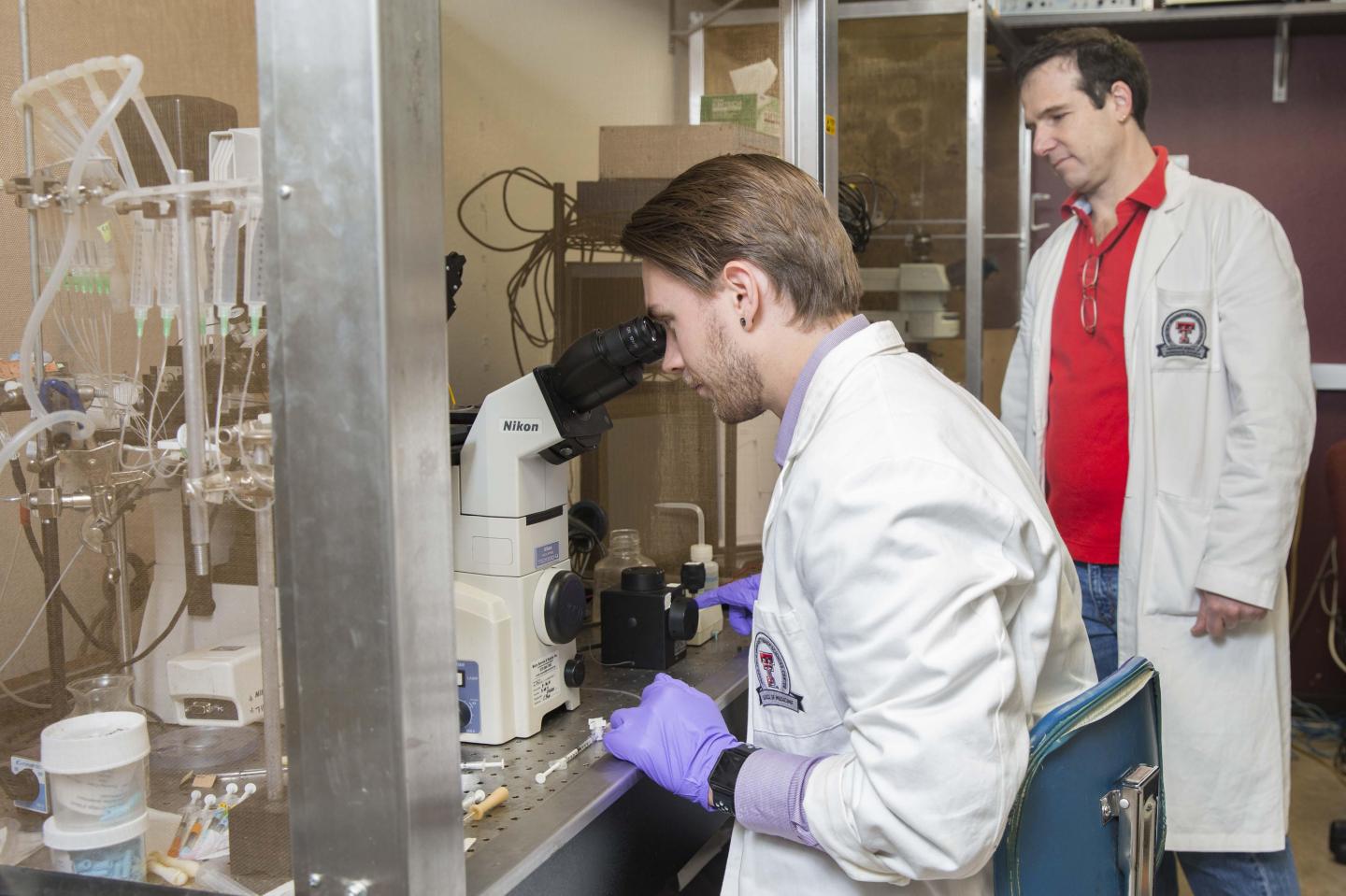
Credit: Texas Tech University Health Sciences Center
Researchers at Texas Tech University Health Sciences Center (TTUHSC) investigated a pump-induced disease and defined the molecular mechanism that triggers it. The study, "On the effect of hyperaldosteronism-inducing mutations in Na/K pumps," was published in the October issue of the Journal of General Physiology.
Dylan J. Meyer, a TTUHSC Ph.D. candidate, along with his advisor, Pablo Artigas, Ph.D., associate professor at the TTUHSC Department of Cell Physiology and Molecular Biophysics, presented, in collaboration with Craig Gatto, Ph.D., at Illinois State University, a study of the functional effects of specific mutations of the Na/K pump found in tumors that induce primary aldosteronism (Conn's syndrome).
Aldosterone is a hormone made by the adrenal gland that helps control blood pressure by changing the levels of electrolytes such as sodium and potassium in the blood. Too much aldosterone causes the body to hold onto sodium and water and to get rid of potassium in unsafe amounts, increasing the amount of fluid in the body, and therefore increasing a person's blood pressure.
"Primary aldosteronism is the most common cause of secondary hypertension and is often caused by a benign tumor in one adrenal gland which continuously produces aldosterone in the absence of normal physiological triggers," Meyer said. "These tumors frequently have defective sodium potassium pumps."
The sodium potassium pump maintains and regulates a cell's ion concentrations by moving three sodium out and two potassium into the cell using an ATP molecule. This extrudes one net positive electric charge per cycle. It was believed that sodium potassium pump mutants increase aldosterone production because they mediate an atypical inflow of charge into the cell, a so-called "gain-of-function," that is opposite in direction compared to the usual outflow of electric charge produced by the normal pumps. Under this "gain-of-function" proposal, a significant inflow of charge would reduce the voltage difference across the membrane, thus increasing aldosterone production.
Meyer, Gatto and Artigas investigated the electric signals from normal and mutant pumps to test if the inward currents (positive charge inflow) through each mutated pump was large enough to produce a significant change in voltage, and therefore represent a common mechanism behind the pathology associated with the mutations. "We observed that the inward currents through several of these mutants were either too small or inexistent," said Meyer. "Our results demonstrate that inward current cannot be a common "gain-of-function" mechanism underlying the generation of primary aldosteronism. However, we found that impaired sodium and potassium transport was common to all mutant pumps, so we concluded that a "loss-of-function" must be the common mechanism by which Na/K pump mutants contribute to constitutive aldosterone production."
Artigas said it's always important to understand why and how these and other mutations induce disease.
"The mechanisms uncovered here surely apply to other illnesses in which the Na/K pumps are mutated, including hemiplegic migraines and other neurological disorders," Artigas said. "Knowing the fundamental cause of an illness is the first step in order to one day improve the lives of the people with these mutations".
In a published commentary about this research, Hans-Jurgen Apell from the University of Konstanz in Germany, said, "The pleasure of reading this paper was that, when following the authors through their presentation and – as is common to me in this process – asking as a critical reader at a certain point, "But what if…," a satisfying answer was provided in the next (or one of the next) paragraph(s). In their systematic approach, no obvious objection or critical thought has been missed, resulting in a convincing piece of insight into a complex molecular mechanisms that eventually leads to the "phenotype" of primary aldosteronism caused by mutations of the Na,K-ATPase. And this makes it worth reading."
###
The research article can be found at The Journal of General Physiology at http://jgp.rupress.org/content/early/2017/10/12/jgp.201711827.
Media Contact
Suzanna Cisneros
[email protected]
806-743-7605
@ttuhsc
http://www.ttuhsc.edu
Related Journal Article
http://dx.doi.org/10.1085/jgp.201711827





